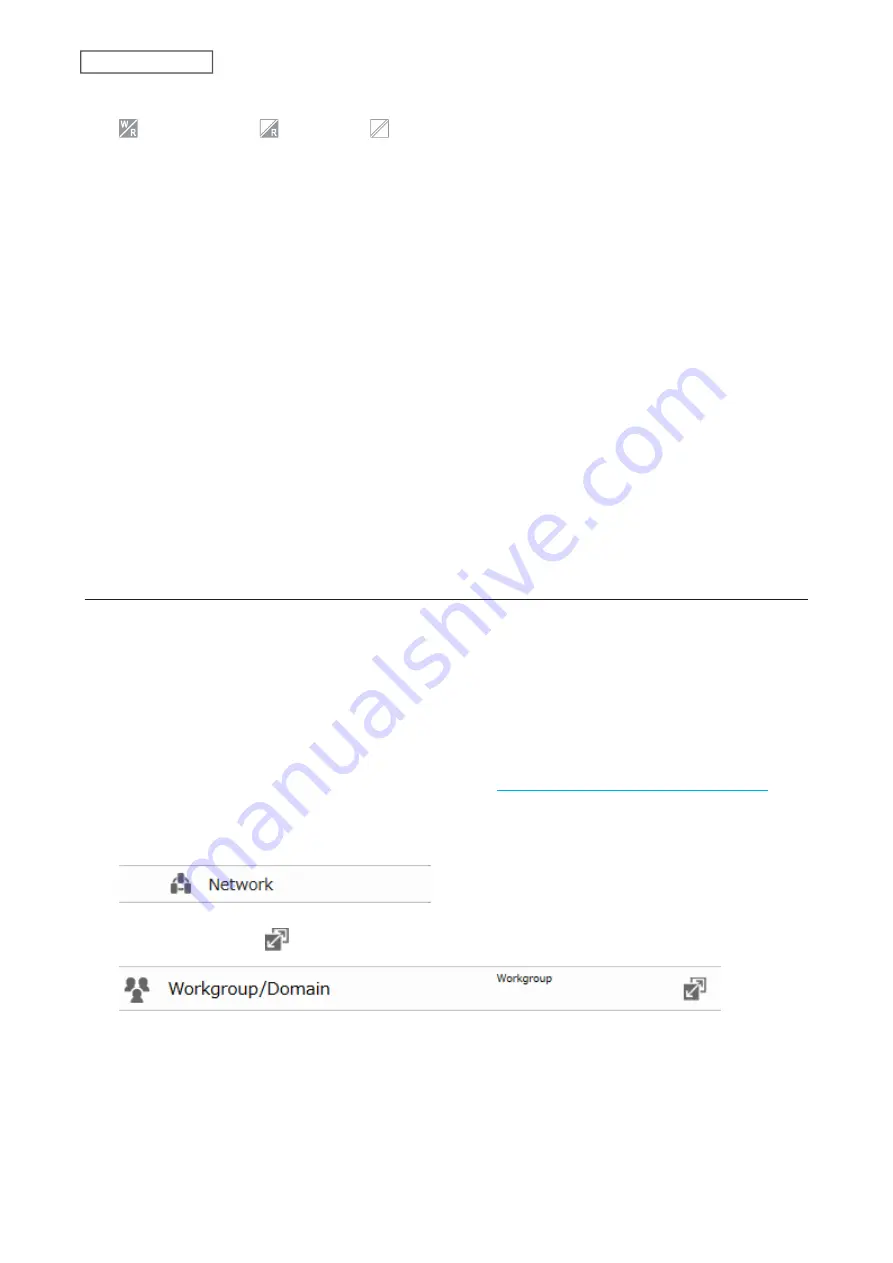
11
Select the level of access for the user or group.
: Read and write
: Read-only
: No access
12
Click
OK
.
Notes:
• If you change the LinkStation’s name, you will no longer be able to use domain users and groups or access
restrictions. To repair this, rejoin the domain.
• The most restrictive access settings will always apply. For example, if both read-only and read and write
permissions are given to a user, the user will have read-only access.
• If a domain username is more than 20 bytes long, the LinkStation truncates it to 20 bytes.
• To use the LinkStation as a member server in an NT domain, the LinkStation should be logged in to the domain
and accessed from a computer that is not a member of the domain with a valid domain account.
• If the LinkStation is a member server of an NT domain, you cannot connect as a guest user via AFP.
• When you change the user or group settings on the domain controller, these changes may not take effect
immediately on the LinkStation until it is rebooted.
• If your LinkStation is a member server in an NT domain and you change the authentication method to
“Workgroup”, the account on the domain controller will not be deleted automatically.
• If the LinkStation has joined a domain network, you cannot connect to it via FTP.
• Don’t disable the SMB protocol while an NT domain server is used for access restrictions. If you do, you will need
to enable SMB again and reconfigure the NT domain settings from scratch.
User Authentication with an External SMB Server
LinkStations on your network can be linked to an external authentication server for centralized management of
user accounts and passwords. The authentication server should be another Buffalo NAS device. Other external SMB
authentication servers are not supported.
Notes:
• Disable SMB2 before using external authentication.
• Access restrictions for local users and groups will still apply to shared folders if an external SMB server is used for
authentication.
• The procedure below contains methods to automatically register external users. You can also manually add
external users by converting them from local users. Refer to the
“Converting Local Users into External Users”
section above for more details on converting local users.
1
From Advanced Settings, click
Network
.
2
Click the settings icon (
) to the right of “Workgroup/Domain”.
3
Click
Edit
.
48
Chapter 2 File Sharing
Содержание LinkStation 200 Series
Страница 27: ...4 Configure the desired settings then click OK 26 Chapter 2 File Sharing...
Страница 28: ...Using a Mobile Device 1 From Settings tap Folder Setup 27 Chapter 2 File Sharing...
Страница 29: ...2 Tap Create Folder 28 Chapter 2 File Sharing...
Страница 33: ...4 Enter the desired settings then click OK 32 Chapter 2 File Sharing...
Страница 34: ...Using a Mobile Device 1 From Settings tap Users 33 Chapter 2 File Sharing...
Страница 35: ...2 Tap Create User 34 Chapter 2 File Sharing...
Страница 38: ...3 Click Add Group 37 Chapter 2 File Sharing...
Страница 42: ...Using a Mobile Device 1 From Settings tap Folder Setup 41 Chapter 2 File Sharing...
Страница 43: ...2 Tap the shared folder that you want to set access restrictions for 42 Chapter 2 File Sharing...
Страница 67: ...10Click at the top right of Settings and choose Restart 66 Chapter 3 RAID Modes and Drive Management...
Страница 74: ...73 Chapter 4 Remote Access...
Страница 90: ...6 Click Time Machine 89 Chapter 5 Backup...
Страница 91: ...7 Click Select Backup Disk 8 Select the shared folder then click Use Disk 90 Chapter 5 Backup...
Страница 130: ...6 Replace the four screws 7 Insert the new drive back into the empty slot 129 Chapter 8 Drive Replacement...






























